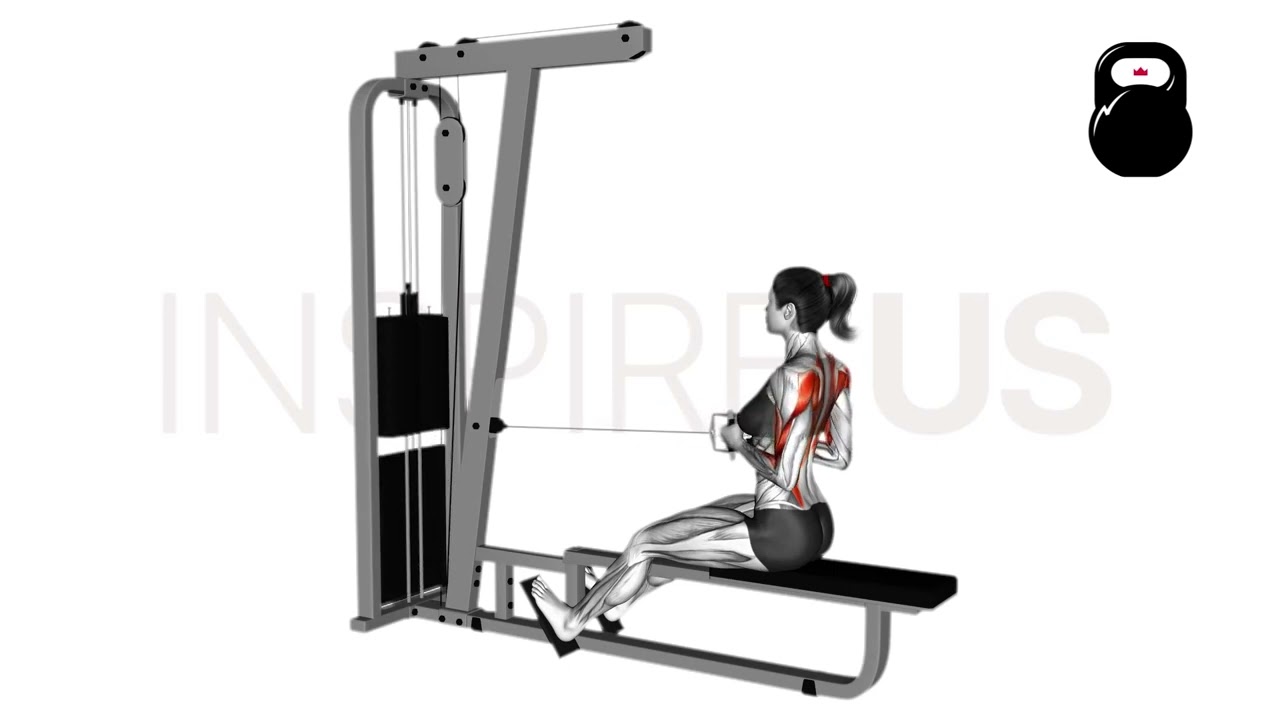Cable Rows: Benefits, Muscles Worked, and More
Cable rows are the perfect entry-level pull exercise for those seeking greater development in their back. With its low barrier of entry and lengthy time under tension, building muscle mass and excellent strength is all but guaranteed.
But before throwing this classic back exercise into your workout, it’s important to have a full understanding of what makes it so effective.
In this article, we will go over exactly that - as well as how to perform it correctly, what specific muscles are worked by the cable row, and a few common mistakes you may wish to avoid.
What are Cable Rows?
Upon examination, cable rows can be classified as an open chain compound exercise of moderate intensity and low technical complexity.
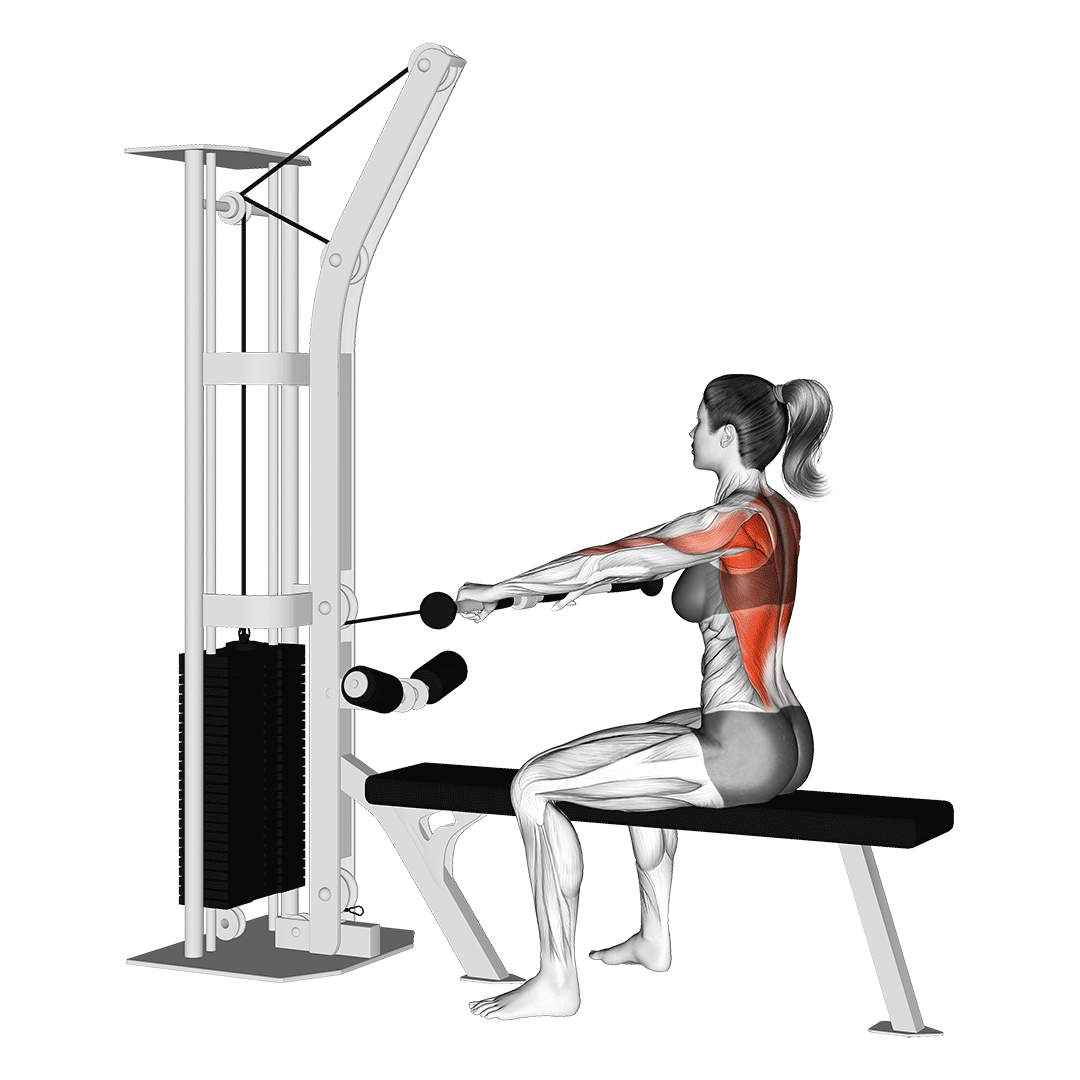
Cable rows are performed in a wide variety of different training disciplines due to their high versatility. They can easily be programmed and modified so as to facilitate greater pulling strength development, or otherwise performed in high volume and full ranges for greater hypertrophy.
The cable row is classified as a horizontal pull with a particular emphasis on the mid and upper back muscles. Its variations often involve altering the grip width and style used so as to emphasize different sections of the back and arms.
Should You Do Cable Rows?
Barring any injuries you may have, it is likely that the cable row is entirely safe for you to perform. Follow proper form and the risk of injury is practically zero.
However, in particular, bodybuilders and other athletes requiring high training volume of their back will benefit the most from doing cable rows.
How to Do a Cable Row
To perform a repetition of the cable row, the lifter will first seat themselves facing the cable pulley, setting their feet on the footplates if present. The cable handle should be held in a double overhand grip at arm's length (or neutral depending on the attachment), shoulders neutral, core braced and upper back vertical.
From this position, the lifter will squeeze their latissimus dorsi and bend at the elbows, pulling the handle towards their chest and sternum. The shoulder blades should retract and squeeze together as the elbows pass the sides of the torso.
Throughout this movement, the core should remain contracted, the torso leaning only slightly back and the chest pushed outwards.
Once the handle has touched the torso (or come close to it) the lifter will slowly reverse the motion and allow the resistance of the cable to pull their arms back forwards.
When the arms are straight once more, the repetition is considered complete.
What Muscles are Worked by Cable Rows?
Cable rows are what is known as a compound movement - meaning that multiple muscles are required to move multiple joints.
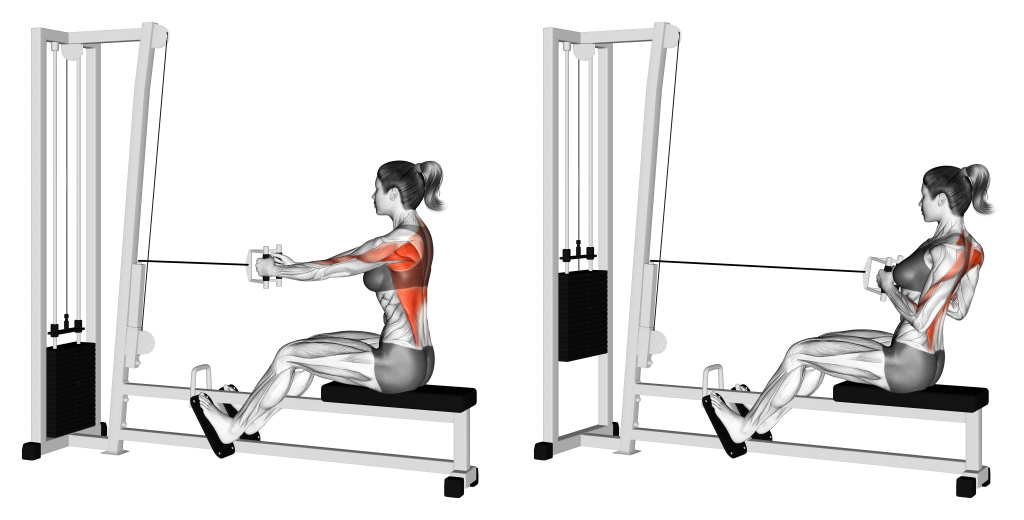
Of course, not all of these muscles are contracted in the same way, and indeed they are separated according to whether they are static in their contraction (stabilizers) or dynamic (movers).
Mover Muscles
In terms of those muscles worked the hardest by cable rows, the latissimus dorsi, lower trapezius, rhomboids, teres major and minor as well as the infraspinatus are all primary movers.
In addition to these, the posterior deltoid head, the elbow flexor muscles and the upper trapezius all act in a dynamic (although lesser) role as well.
Stabilizer Muscles
Mover muscles aside, the cable row would not be possible without the inclusion of the core, erector spinae and the medial head of the deltoids.
Each of such muscles are recruited primarily in an isometric manner, meaning that they help stabilize the entire movement and support the aforementioned mover muscles.
What are the Benefits of Doing Cable Rows?
Cable rows are performed to achieve one or all of the following training benefits.
Excellent for Building Back Muscle Mass and Strength
Because of its wide-reaching muscular recruitment pattern, large range of motion and high capacity for volume - the cable row is excellent for developing the muscles of the back in both mass and strength.
For greater development of strength in the back, the training volume can be performed in exchange for a larger amount of weight being moved with each repetition. The fact that the cable row is self-stabilizing and unlikely to result in injury helps facilitate this.
Furthermore, on the other hand, those seeking greater hypertrophy will find that the lengthy time under tension and large range of motion inherent to the cable row is also quite conducive to building mass.
Lifters may even take this further by emphasizing a greater amount of volume over gross weight moved.
In comparison to other horizontal pull exercises that are occasionally limited in terms of volume capacity or ROM, the cable row is perfect for getting a full stretch of the lats and other mid-back musculature - for multiple repetitions, at that.
Carryover to Other Horizontal Row Exercises
The cable row allows for enhanced performance of other horizontal pulling exercises - especially those of a similar set of mechanics to the cable row itself. This includes exercises like the barbell row, inverted row and the dumbbell row.
Cable rows achieve this carryover by not only improving general muscular strength, but also helping reinforce the specific movement pattern shared between most other horizontal rowing movements.
Ensure that as much attention is paid to proper form as possible, as this will help ingrain the movements into your conscious and motor memory.
Reinforces Mechanics Related to the Scapula, Elbows and Shoulders
Because of the low risk of injury and low joint impact, the cable row can be excellent for reinforcing certain mechanics related to the scapula, elbow or shoulders.
In particular, those wishing to improve their scapular extension and retraction, elbow flexion and external shoulder rotation can all benefit from careful performance of the cable row.
Low-Impact, Accessible and Novice-Friendly
As both a machine-based exercise and as a relatively simplistic one, the cable row is one of the best entry-level exercises for novices and recovering weightlifters alike.
With its forgiving mechanics and natural movement pattern - so long as no forward hunching of the torso is present, it is unlikely an injury will occur.
Easily Adjusted and Modified to Meet Training Needs
Like most other cable machine exercises, the cable row can easily be modified in terms of resistance level, grip style and even the position of the lifter relative to the machine itself.
This allows for different muscle groups to be emphasized, less strain on certain joints or even the development of entirely separate variations. Such versatility makes the cable row excellent for meeting the various needs of the lifter, regardless of their training discipline or level of experience.
Common Cable Row Mistakes to Avoid
In order to perform cable rows more safely, avoid the following mistakes in execution.
Jerking the Torso or Using Excessive Momentum
As is the case with many other exercises, jerking the body or otherwise using too much momentum during the cable row can injure the lifter.
Most often, this takes the form of the lifter bending at the waist so as to help pull the handle back. Generating momentum in this manner can be a sign that too much weight is being lifted - or that the lifter is having trouble properly engaging their back muscles.
Alternatively, lifters performing the cable row with the assistance of foot plates may be subconsciously engaging their legs so as to also generate additional force.
While significantly less likely to result in injury, doing this can take much emphasis away from the back and biceps and should be avoided.
Pulling Too High
Throughout the entire cable row, it is important for the lifter to ensure their elbows never raise higher than the shoulders.
As the bar is drawn towards the chest, the elbows should be drawn as close to the sides of the torso as possible. Flaring them excessively out to the sides or even pointing them upwards can result in shoulder irritation and impingement.
One good cue to follow is to avoid raising the elbows higher than parallel with the forearms, especially at the start of the repetition.
Internal Shoulder Rotation or Rounding the Upper Back
During the initial phase of the cable row where the arms are extended forwards, lifters should avoid excessively rounding their shoulders inwards or curving forwards at the upper back.
Both are separate mistakes in and of themselves but appear quite similar and should be corrected regardless.
Internal shoulder rotation may be a sign that the cable machine itself is too far from the lifter’s position - or that they are failing to properly align them in a neutral position.
A cue often used to avoid this is to “square” the shoulders so that they align with the rest of the upper body, rather than rotating forwards and squeezing the pecs together.
Excessive internal shoulder rotation will create greater strain on the joint itself and reduce how much initial pulling force the back will be capable of creating.
Likewise, hunching forwards at the upper back can strain the cervical section of the spine - also leading to injuries and poor force output of the back muscles. To avoid this, seek to keep the chest pushed out and upright throughout the repetition. Ensure the head is facing forwards and the neck is not extended in any direction.
Insufficient Range of Motion
Finally, one of the most common mistakes seen with the cable row is a lack of proper range.
The exercise should ideally begin and end with the arms fully extended forwards, with the midpoint of the repetition involving the elbows either parallel to the torso or slightly behind it.
Failing to complete a full range of motion can cause certain muscles to be underworked and create an overall less effective exercise as a whole. Less range of motion will often equate to less time under tension, reducing the benefits of the cable row.
Alternatives to the Cable Row
If the cable row doesn’t quite meet your needs, try the following three alternatives out. Each targets much the same muscles as the cable row, though from a different angle or with different forms of stimulus.
Lat Pulldowns
Lat pulldowns are a similar cable machine based back exercise targeting the lats and other mid-back muscles.
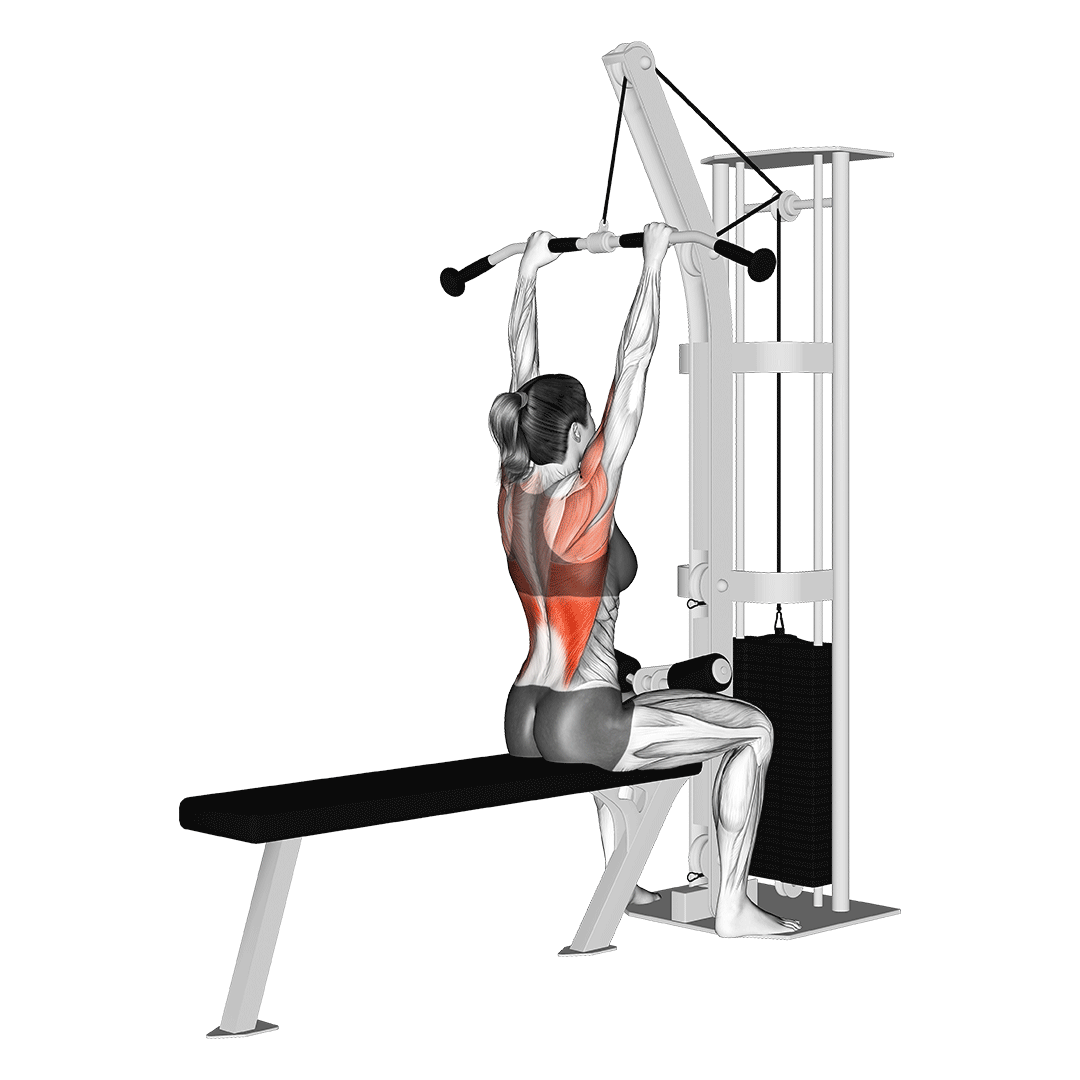
Unlike the cable row, lat pulldowns are a vertical pulling movement that better replicates a standard pull-up rather than any back row variation. They are the perfect alternative to the cable row for lifters that wish to better target their lats and build overall greater back width.
Bent-Over Barbell Row
The bent-over barbell row is a free weight alternative to the cable row featuring flexion of the hips and knees so as to set the torso nearly parallel to the floor. Otherwise, the main tenets of elbow flexion, engagement of the back muscles and scapular retraction remain much the same.
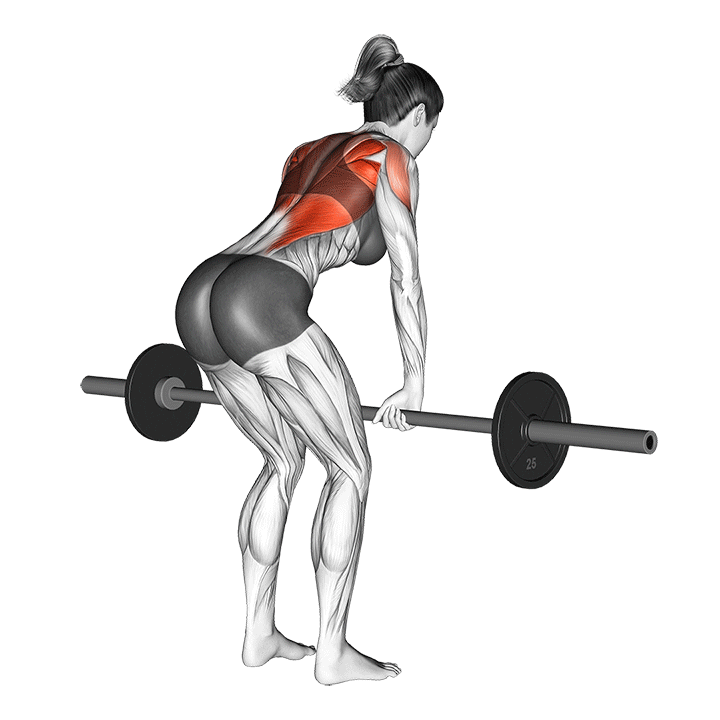
Because the bent-over barbell row is a heavy free weight exercise, switching over from the cable row will require considerably more physical strength and greater familiarity with protecting the lower back while lifting.
As such, the bent-over barbell row is more effective as a substitute to the cable row for more advanced weightlifters - or those seeking a more intense back workout.
Inverted Rows
For lifters away from the gym, one possible alternative to the cable row is the classic inverted row.
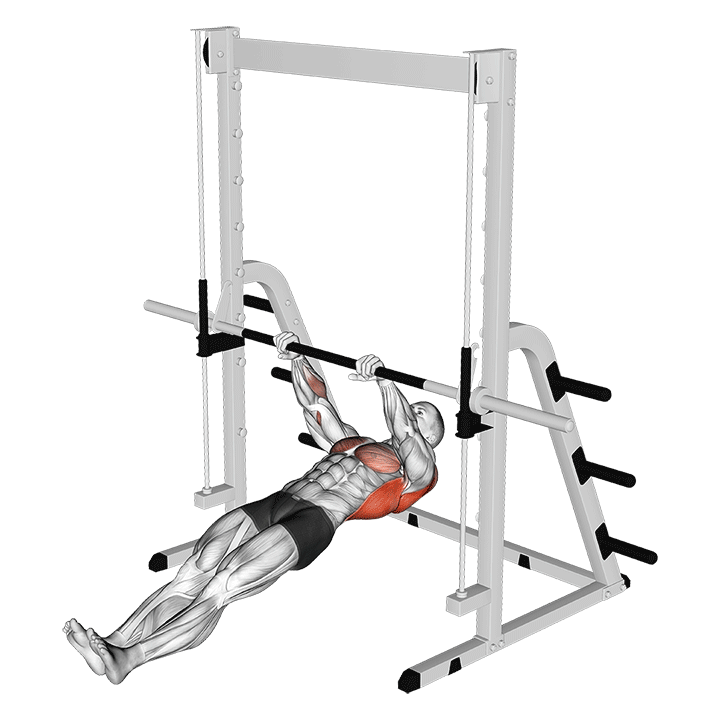
Inverted rows are an entirely bodyweight horizontal pulling movement that require only an object suspended over the ground to perform. The lifter suspends themselves beneath this object and rows their entire body in a movement pattern similar to that of the cable row.
While nowhere near as adjustable as the cable row, inverted rows can readily be used as a method of maintaining horizontal pulling strength and muscle mass of the back when no cable machine is present.
Frequently Asked Questions (FAQ)
Are Cable Rows Good for You?
Yes! Cable rows are excellent for improving posture, increasing muscle mass in the back and improving pulling strength in the upper body.
For the best results, combine cable rows with a biceps isolation exercise and one that strengthens the muscles of the lower back.
What Type of Exercise is a Cable Row?
The cable row is a compound horizontal pulling exercise. It is performed in order to train the muscles of the back and biceps.
Depending on the goals of the performer and their level of experience, the cable row can take center stage in a workout session or simply act as a supplementary exercise to heavier movements like the barbell row, pull-up or deadlift.
Do Cable Rows Burn Fat?
Yes.
Although an anaerobic exercise, cable rows can indeed burn a few calories - which translates to burning fat, depending on your diet.
However, keep in mind that resistance exercises in general are ineffective at burning calories. If you truly wish to expend some extra weight through exercise, try aerobic exercises like jogging or cycling. They will burn significantly more calories in a shorter span of time than the cable row would.
Final Thoughts
The cable row is an all-around solid inclusion into practically any workout regimen.
With attention paid to form, the right kind of programming and the support of a few accessory exercises, the cable row truly shines as a back-builder.
However, keep in mind that the cable row does have its own set of disadvantages as well. Poor stabilizer muscle recruitment and comparatively less functionality to other horizontal pulling exercises are factors to be considered when including the cable row in your training program.
If you’re having trouble selecting the right exercises for your back workout, try following a pre-made training program or seek out the advice of a professional coach.
References
1. Lorenzetti, Silvio, Romain Dayer, Michael Plüss, and Renate List. 2017. "Pulling Exercises for Strength Training and Rehabilitation: Movements and Loading Conditions" Journal of Functional Morphology and Kinesiology 2, no. 3: 33. https://doi.org/10.3390/jfmk2030033
2. Fenwick, Chad M J et al. “Comparison of different rowing exercises: trunk muscle activation and lumbar spine motion, load, and stiffness.” Journal of strength and conditioning research vol. 23,2 (2009): 350-8. doi:10.1519/JSC.0b013e3181942019
3. Lehman, Gregory J et al. “Variations in muscle activation levels during traditional latissimus dorsi weight training exercises: An experimental study.” Dynamic medicine : DM vol. 3,1 4. 30 Jun. 2004, doi:10.1186/1476-5918-3-4

